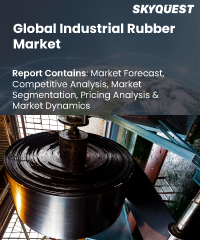
Report ID: SQMIG25B2004

Report ID:
SQMIG25B2004 |
Region:
Global |
Published Date: April, 2024
Pages:
223
|
Tables:
66 |
Figures:
75
Strategic partnerships and collaborations play a vital role in the competitive landscape of the industrial rubber market. Companies often form alliances with suppliers, technology providers, and industry stakeholders to access new markets, expand their product portfolios, and leverage synergies. These partnerships enable companies to combine their expertise and resources, driving innovation and enhancing their market position. Geographic expansion is a key strategy employed by companies in the industrial rubber market to tap into new markets and cater to regional demand. Market leaders often establish production facilities or distribution networks in emerging economies with growing industrial sectors. This allows them to gain a competitive advantage by being closer to customers, reducing transportation costs, and adapting products to local market needs.
Top Player’s Company Profiles
Our industry expert will work with you to provide you with customized data in a short amount of time.
REQUEST FREE CUSTOMIZATIONWant to customize this report? This report can be personalized according to your needs. Our analysts and industry experts will work directly with you to understand your requirements and provide you with customized data in a short amount of time. We offer $1000 worth of FREE customization at the time of purchase.

Report ID: SQMIG25B2004